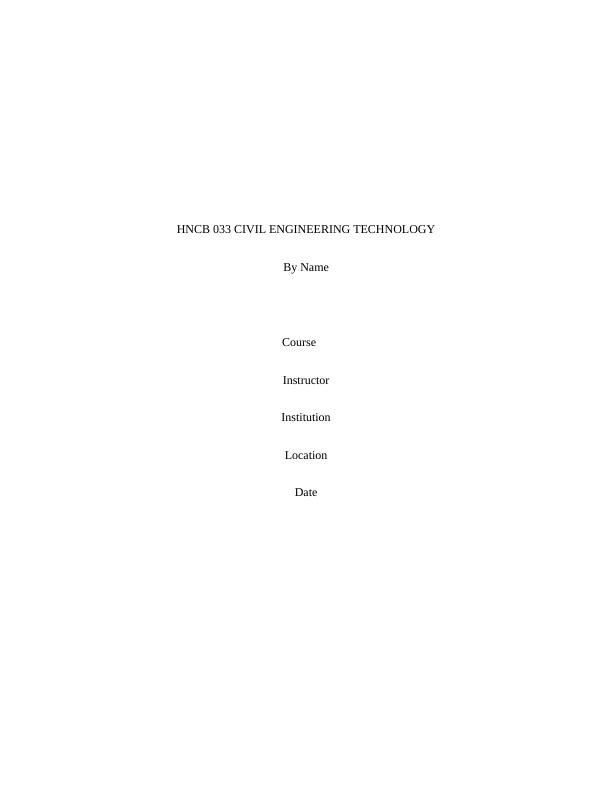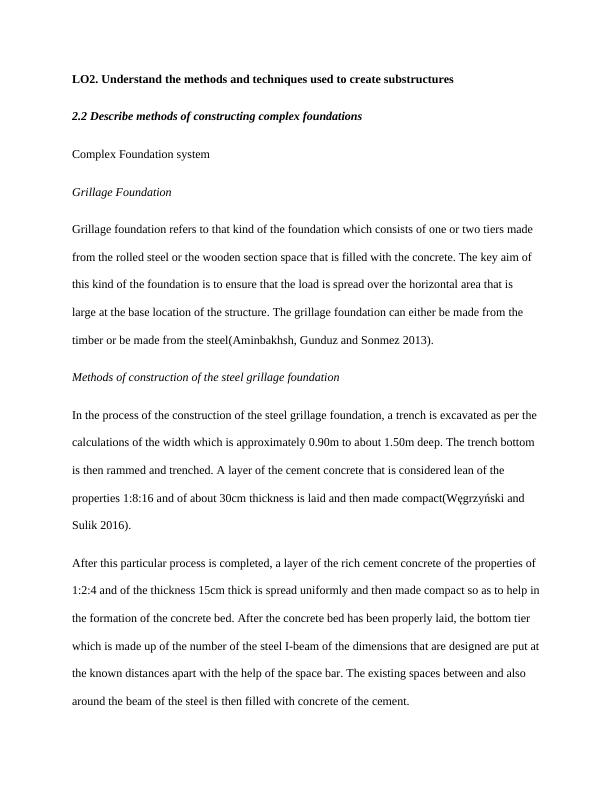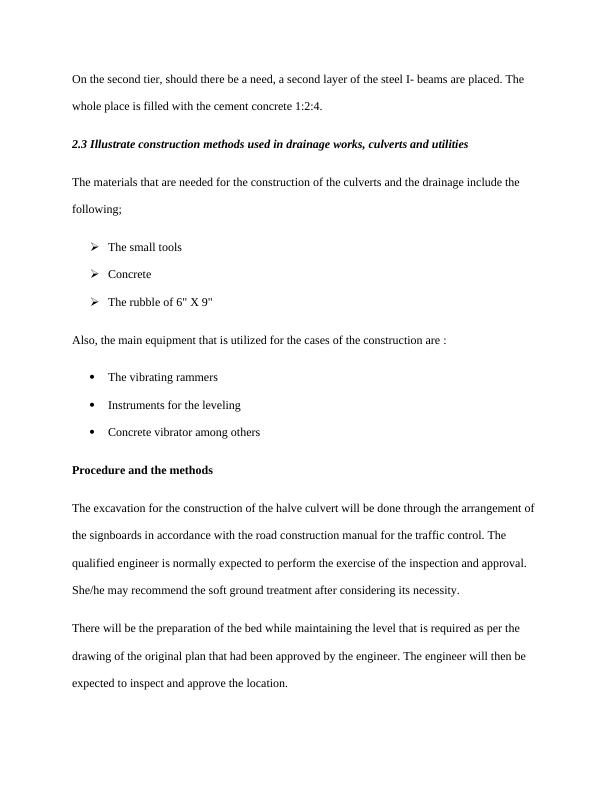Methods and Techniques Used in Civil Engineering Activities
This module covers various topics in civil engineering technology, including earthwork activities, substructures, superstructures, and hazards associated with civil engineering activities.
14 Pages2769 Words444 Views
Added on 2023-05-28
About This Document
This article discusses the methods and techniques used in civil engineering activities such as constructing complex foundations, drainage works, culverts, and utilities. It also covers the hazards associated with civil engineering activities, the role of the planning supervisor, solutions to civil engineering problems, and safety plans for problems arising from civil engineering activities.
Methods and Techniques Used in Civil Engineering Activities
This module covers various topics in civil engineering technology, including earthwork activities, substructures, superstructures, and hazards associated with civil engineering activities.
Added on 2023-05-28
ShareRelated Documents
End of preview
Want to access all the pages? Upload your documents or become a member.
Substructure: Foundation, Ground Floor and DPC
|13
|2438
|450
Applying Structural Principles to Residential Low-Rise Constructions
|8
|789
|479
The real hands-on activity commences
|16
|3399
|20
Civil Engineering Technology
|15
|4482
|49
Construction Management
|11
|1575
|71
Construction Management : Assignment
|12
|4690
|154




